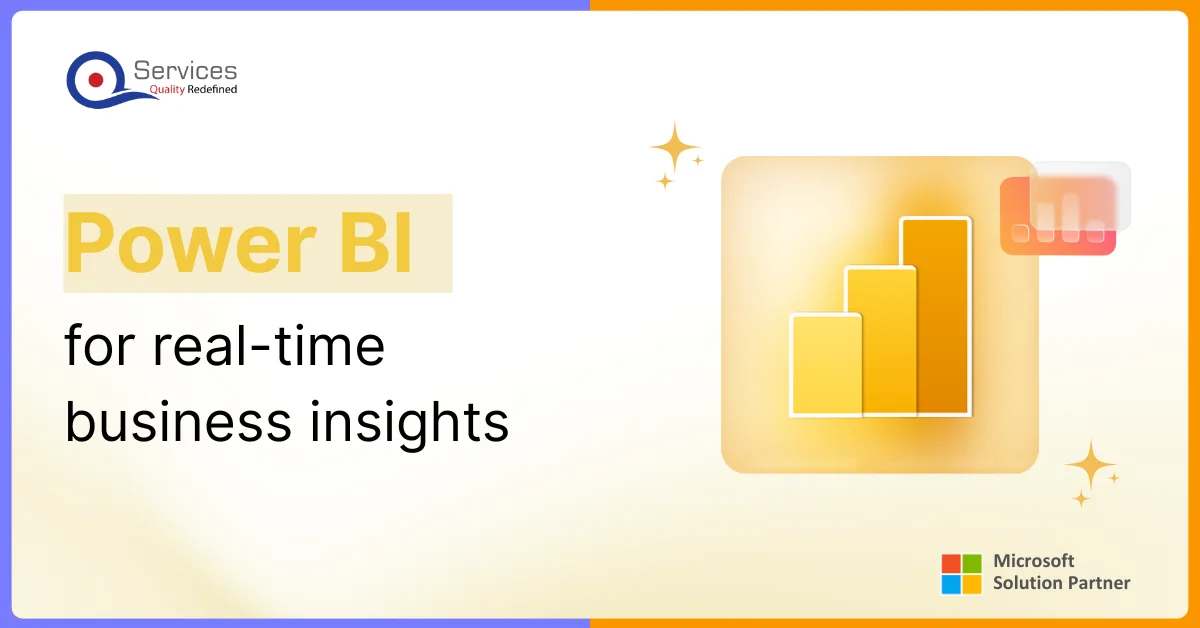
Home » Top ASP.NET Trends Shaping Web Development in 2026

As we are heading to 2026, the conversation around web development has shifted from what’s trending today to what will define tomorrow.
For years, businesses have relied on ASP.NET to build secure, reliable, and scalable web applications. But today, it’s not just about building apps but building a secure future of .NET in web development.
ASP.NET has changed a lot over the years. It’s no longer just a framework for websites. In 2026, it is becoming a complete platform that connects with cloud-native services, artificial intelligence (AI), and modern ways of building applications.
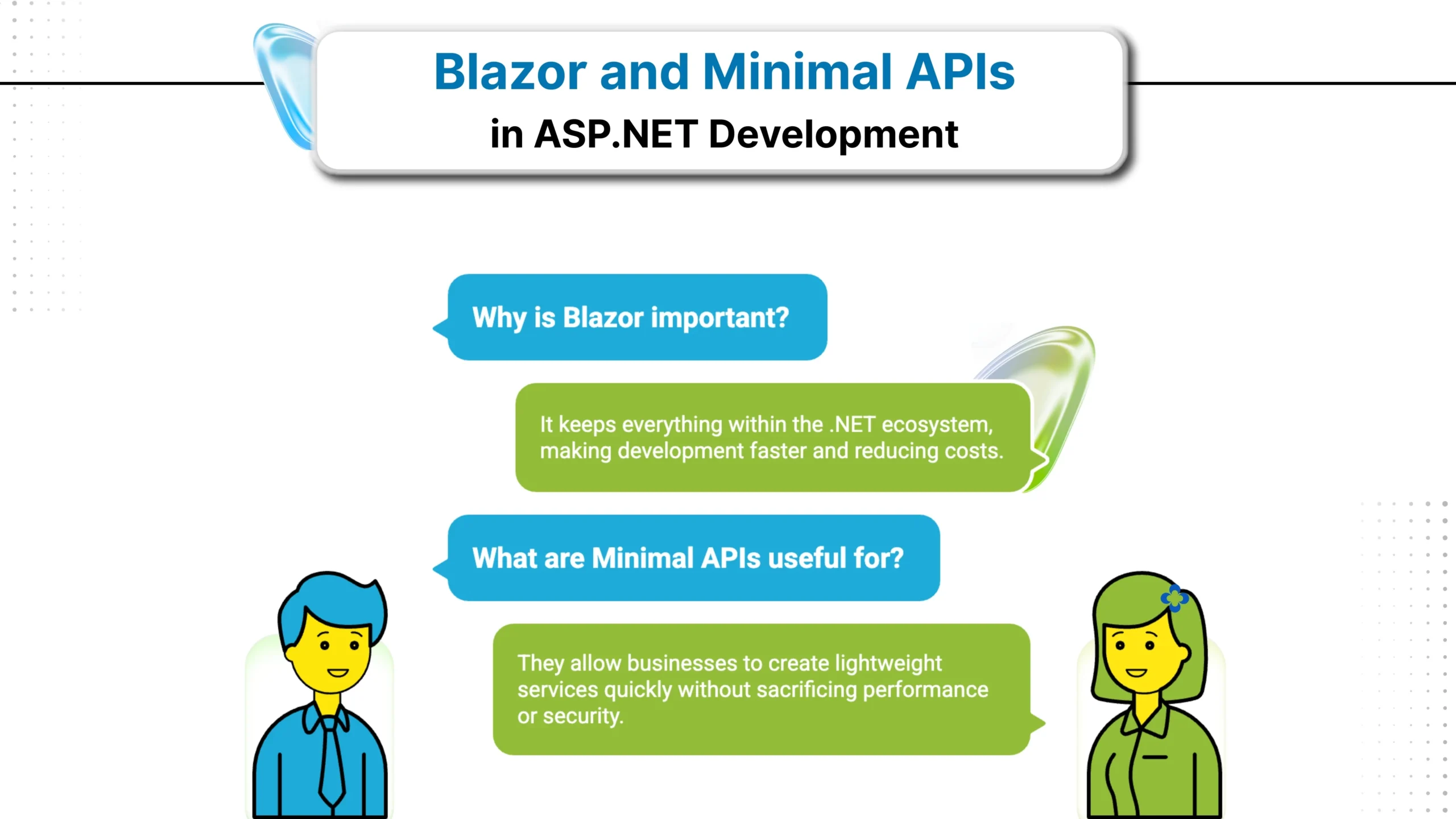
Blazor is a framework that lets developers build interactive web apps using C# instead of JavaScript which means businesses that already rely on ASP.NET don’t need to switch languages or hire new skill sets. With Blazor, teams can create modern, responsive applications that run smoothly in browsers and even work offline.
For example:
Blazor is important because it keeps everything within the .NET ecosystem, making development faster and reducing costs for companies.
In the past, building APIs often required writing a lot of extra code. But with Minimal APIs in ASP.NET, developers can build powerful APIs with just a few lines.
This is useful in industries like healthcare or logistics, where companies need lightweight services that can handle huge amounts of data. Minimal APIs allow businesses to create these services quickly without sacrificing performance or security.
For instance:
Together, Blazor and Minimal APIs are shaping how businesses approach web development in 2026. They make applications build faster, manage easier, and more cost-effective.
Get free Consultation and let us know your project idea to turn into an amazing digital product.


Suppose you are running a logistics company in 2026. Your trucks are on the road 24/7, carrying goods across states. Suddenly, one breaks down. Deliveries are delayed, customers are frustrated, and costs skyrocket.
Now imagine a different story, your ASP.NET Core application with Azure Machine Learning (Azure ML), predicts that breakdown before it happens. The app, connected through IoT services, warns the driver and reroutes the delivery. You save time, money, and reputation.
That’s the real power of AI in predictive maintenance. And it’s just one-way businesses are bringing intelligence into their apps.
Traditional apps react when something happens. But businesses in industries like oil and gas, e-commerce, and healthcare want apps that think ahead. With Azure analytics services and IoT solutions, ASP.NET developers are building systems that can:
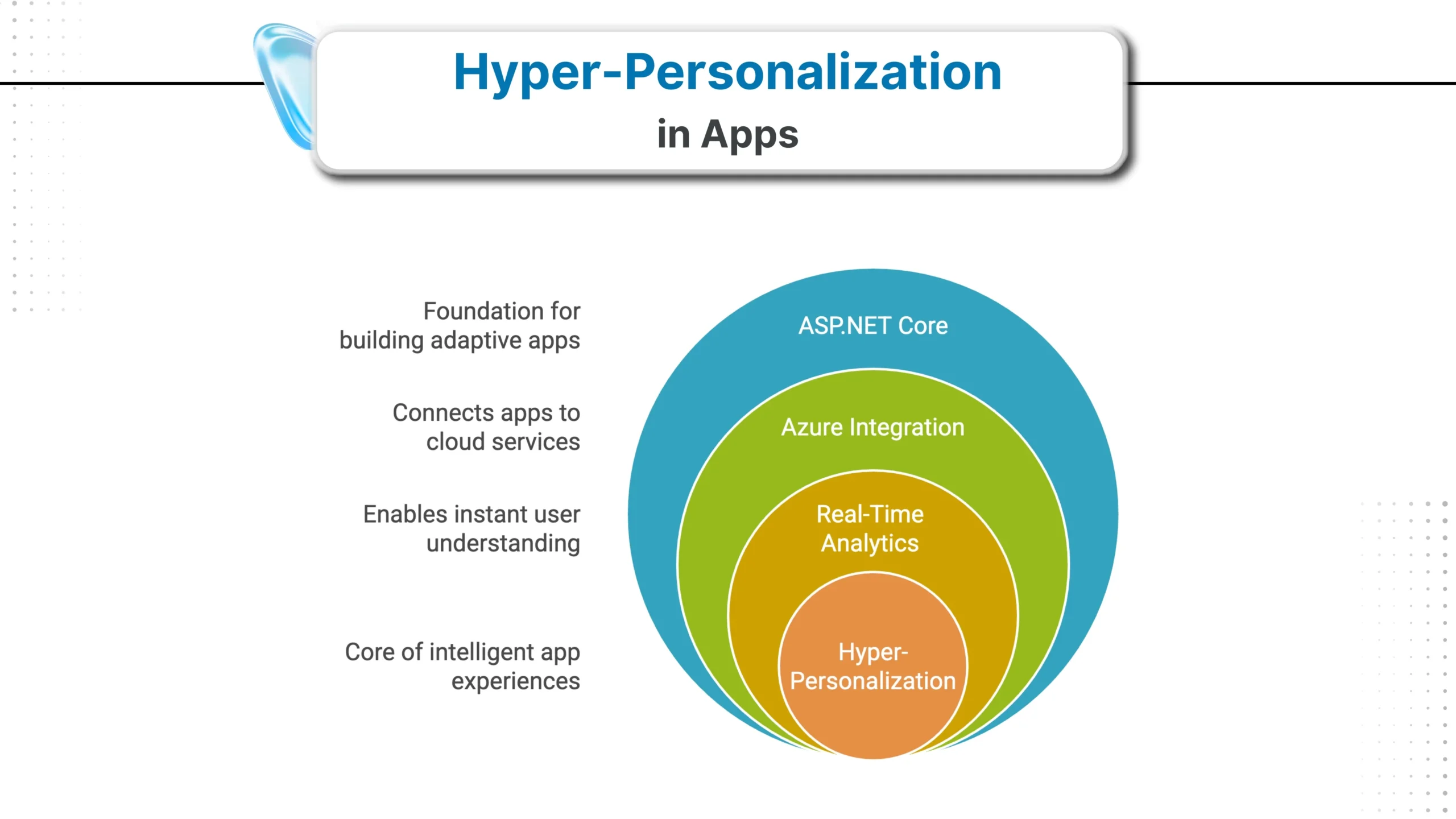
By 2026, businesses won’t settle for apps that simply work but will expect apps that understand users instantly and act intelligently. With ASP.NET Core connected to Azure analytics services, IoT solutions, and real-time data pipelines, companies will deliver hyper-personalized experiences that feel almost human.
Share your project idea with us. Together, we’ll transform your vision into an exceptional digital product!

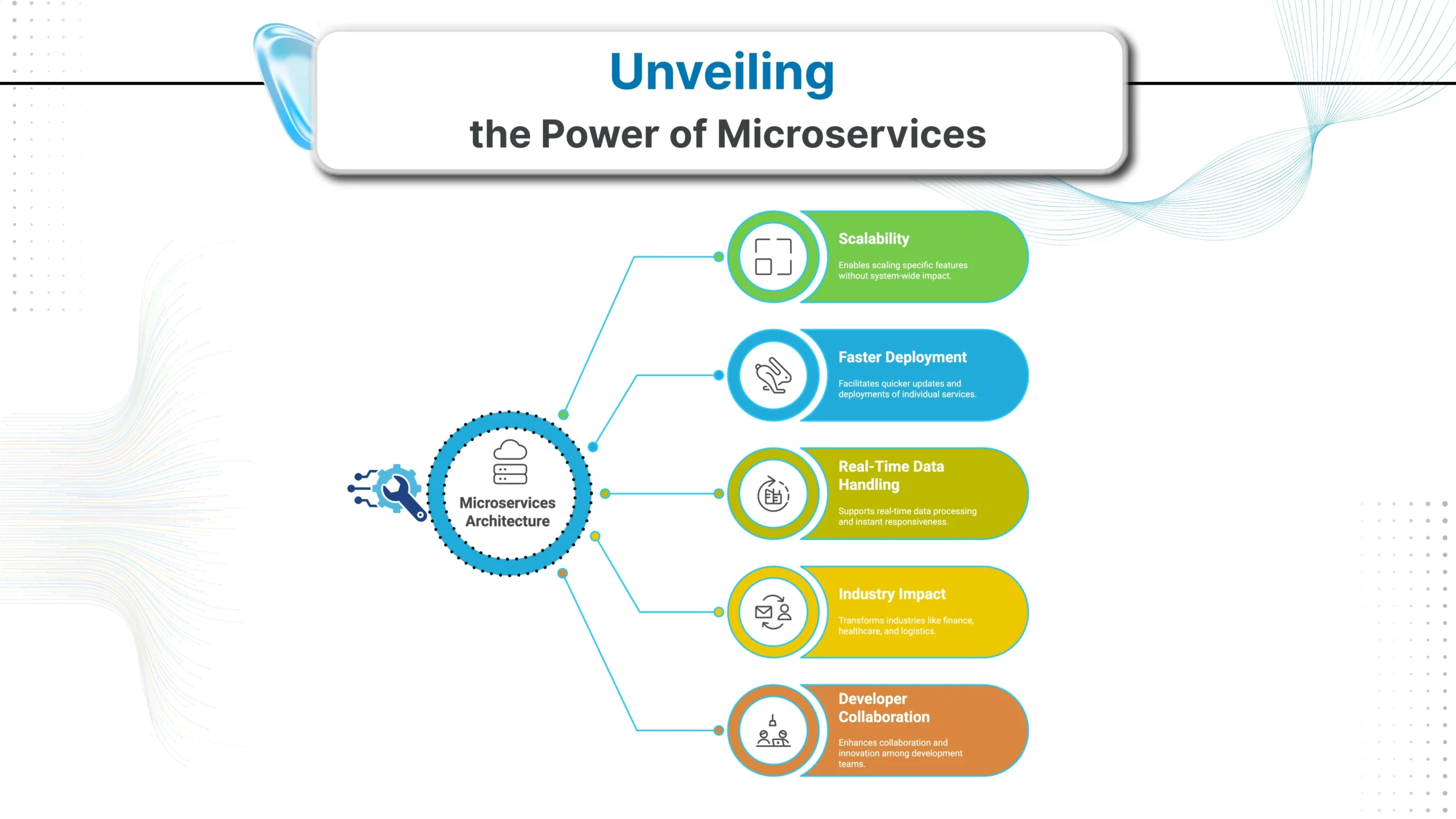 By 2026, businesses will largely move toward event-driven architectures and microservices in their ASP.NET Core applications. Instead of building one large monolithic application, developers will break apps into smaller, independent services. This makes companies to scale specific features, deploy updates faster, and handle large amounts of data in real time without affecting the entire system.
For industries like finance, healthcare, e-commerce, and logistics, this trend will be a game-changer. Microservices connected with Azure cloud-native services, IoT solutions, and Azure data analytics will ensure that every part of an application can respond instantly to changes. For example, a logistics platform can update shipment tracking in real time, while a healthcare system can instantly alert doctors about critical patient updates. Event-driven models make these systems highly responsive, reliable, and easier to maintain.
For developers, the shift to microservices will also encourage better collaboration and faster innovation. Teams can work on individual services independently while integrating them through ASP.NET Core APIs.
By 2026, businesses will largely move toward event-driven architectures and microservices in their ASP.NET Core applications. Instead of building one large monolithic application, developers will break apps into smaller, independent services. This makes companies to scale specific features, deploy updates faster, and handle large amounts of data in real time without affecting the entire system.
For industries like finance, healthcare, e-commerce, and logistics, this trend will be a game-changer. Microservices connected with Azure cloud-native services, IoT solutions, and Azure data analytics will ensure that every part of an application can respond instantly to changes. For example, a logistics platform can update shipment tracking in real time, while a healthcare system can instantly alert doctors about critical patient updates. Event-driven models make these systems highly responsive, reliable, and easier to maintain.
For developers, the shift to microservices will also encourage better collaboration and faster innovation. Teams can work on individual services independently while integrating them through ASP.NET Core APIs.
ASP.NET continues to evolve with .NET 8 and .NET 9, offering improved performance, cross-platform compatibility, cloud-native support, and integration with AI/ML. Its strong ecosystem and security features make it a preferred choice for enterprise-level applications.
In 2026, AI integration is a major trend in ASP.NET projects. Developers are embedding AI-driven personalization, predictive analytics, and intelligent chatbots into applications using .NET’s seamless integration with Azure Cognitive Services and OpenAI APIs.
Blazor is revolutionizing ASP.NET development by enabling full-stack web applications with C# instead of JavaScript. In 2026, WebAssembly-powered Blazor apps are delivering near-native performance and improved developer productivity.
Yes, ASP.NET Core is now fully optimized for microservices, Kubernetes, and serverless computing on platforms like Azure and AWS. This makes it highly effective for building scalable, cloud-native apps in 2026.
ASP.NET continues to strengthen built-in security with features like identity management, zero trust architecture integration, and AI-powered threat detection. Compliance with industry standards like GDPR, PCI DSS, and HIPAA remains a priority.
Absolutely. With .NET MAUI (Multi-platform App UI) and Blazor Hybrid, developers can build cross-platform apps that run seamlessly on web, desktop, and mobile devices using a single codebase.

Have a one on one discussion with our Expert Panel
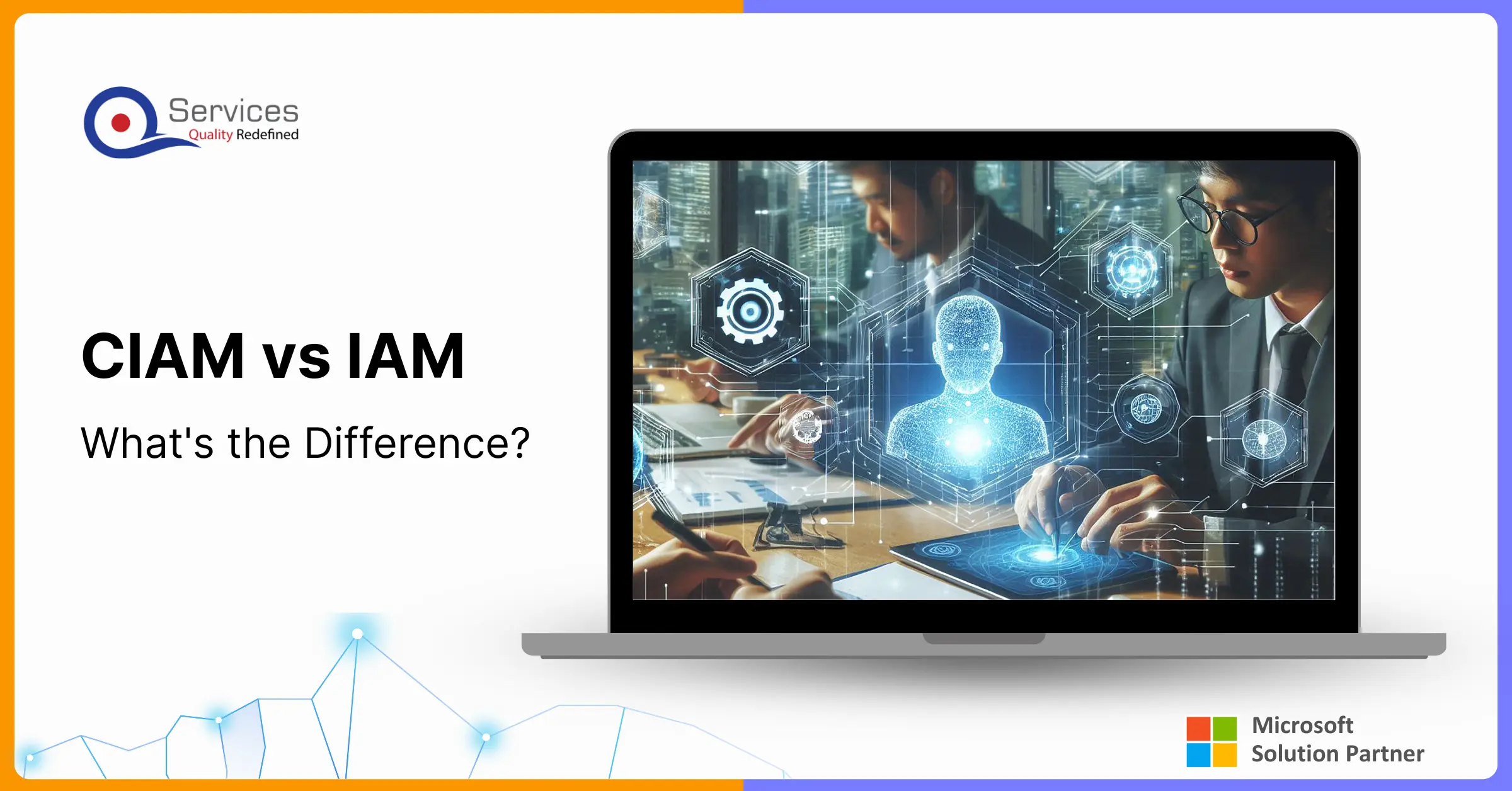
Secure access is vital for organizations managing digital identities in today’s landscape. While both CIAM and IAM secure user identities, they serve different purposes — CIAM for customers and IAM for employees. This article explores their key differences and how to choose the right system.

For decades, traditional banking systems handled only basic transactions. The digital era exposed their limitations in speed and adaptability. Evolved core banking now powers seamless, future-ready financial services.
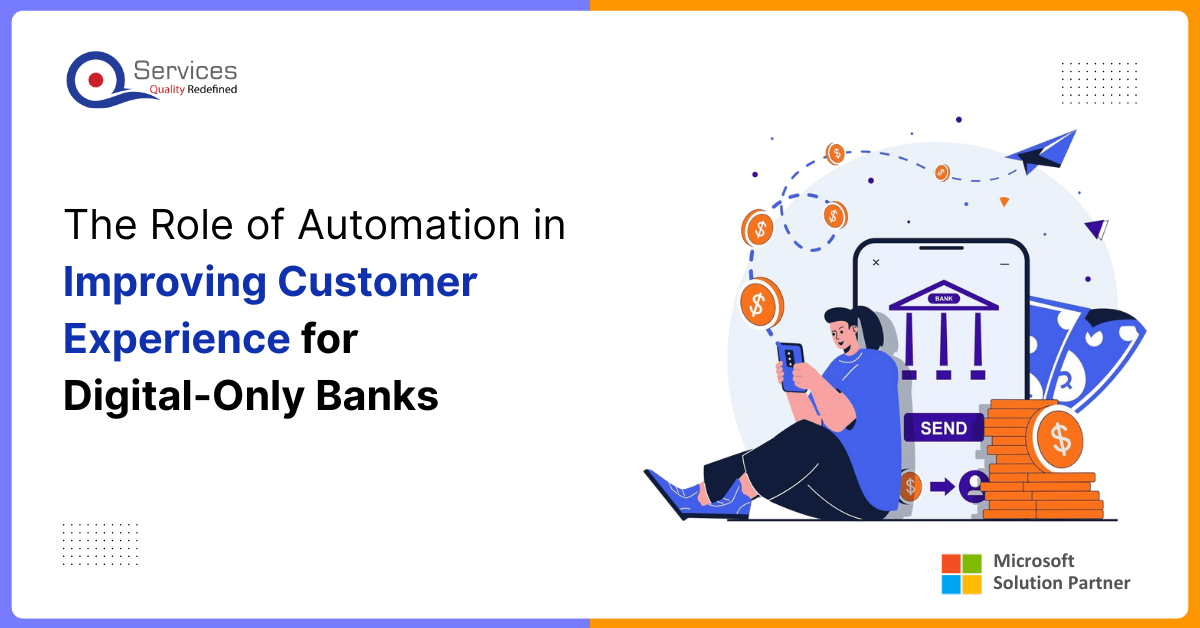
As digital expectations grow, customers now demand speed, ease of use, and 24/7 availability. To meet these demands at scale, digital-only banks choose business process automation in the banking industry to deliver consistent, responsive, and personalized service.

Founder and CEO

Chief Sales Officer
